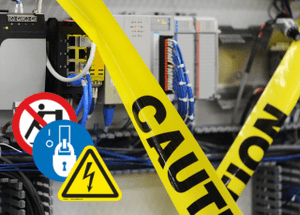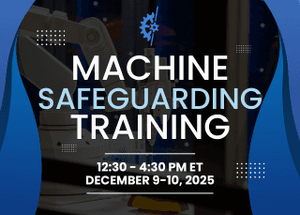Guidelines for Safely Reopening Facilities During COVID-19

Reducing Risk as Workplaces Reopen During the Pandemic
After months of temporary shutdowns and strictly enforced social distancing measures resulting from the COVID-19 outbreak, many states are slowly easing up on restrictions. That means that essential businesses are expanding production in response to the reopening economy, and workplaces that faced closures due to the pandemic are looking to resume some level of in-person operations with quarantines being pealed back. The common denominator: safety and risk reduction is still paramount. Now more than ever, taking the operational steps necessary to curb exposure and promote effective hygiene practices is imperative to the health and safety of employees. Read more about guidelines to safely reopen facilities amid COVID-19 and why best practice safety visuals should be incorporated into your return to work risk reduction strategy.
Controls to Prevent Worker
Exposure
As people head back to work, OSHA offers general guidance for all workers and
employers. The recommendation is that employers adapt their virus exposure
prevention strategy to the type of work being performed and the level of risk
exposure. They advise that companies complete a thorough hazard assessment by
using a combination of engineering and administrative controls (changing the
way people work), safe work practices and appropriate personal protective
equipment (PPE) to help prevent the spread of infection and shield employees.
The manufacturing environment, where production and assembly line workers are often in close proximity to coworkers and supervisors, can substantially contribute to potential exposures. The Centers for Disease Control and Prevention (CDC) highlights distinctive factors that affect employees’ risk of infection in manufacturing workplaces and offers a set of guidelines to best prevent exposure. That includes:
Engineering Controls
- Distance between workers: Put controls in place that allow for increased distance between workers on assembly lines, at or around time clocks, in break areas and in locker rooms/changing areas. Ensure workers are at least six feet apart when possible. Changes in production, modifying the alignment of workspaces and adding physical barriers might be necessary to accommodate this. Floor markings and signs help remind workers to maintain proper distancing on the clock and on breaks.
- Duration of contact: Reduce prolonged closeness to coworkers by staggering shifts and breaks whenever possible to decrease exposure from potentially infected individuals.
- Type of contact: From coughs to sneezes to contaminated work surfaces and equipment, COVID-19 can be transmitted in numerous ways. It’s important to regularly wash hands and disinfect commonly used everyday items like surfaces or objects, PPE, tools, workstations and break room tables. If possible, avoid sharing transportation via car pools, ride-share vans, shuttle services and other forms of public transit.
Administrative Controls
- Limit facility access to essential employees and vendors only.
- Break meetings into smaller groups, eliminating unnecessary meetings altogether.
- Designate point people to monitor distancing on production lines and facility floors.
- Encourage single-file movement throughout the facility.
- Provide access to soap, clean running water, hand sanitizer and paper towels for proper handwashing.
- Wear cloth masks as a protective measure, especially in cases where working conditions make social distancing impossible.
- Educate and train workers and supervisors through in person or video demonstrations about hygienic practices and properly using and disinfecting PPE. Utilizing disposable PPE is recommended.
- Consider screening employees’ temperatures before entering the workplace. Screening programs should be coordinated with local health officials whenever possible and should be designed with employee privacy in mind.
Your Back to Work
Plan and Visual Safety Communication
While many manufacturing plants are readying to reopen, proactively assessing
safety from all angles is advised. When it comes to the health and safety of
your team, utilizing best practice safety visuals on equipment and in your
facility is an important part of your COVID-19 safety measures. After all, the
safety signs placed
around your facility are not just a simple fix to satisfy regulatory compliance
— they’re an effective part of your overall safety and risk reduction strategy.
It’s always a priority, especially now in an environment where people are hyper
concerned with health and safety, that facility and equipment hazards are made
known to help prevent people from interacting with them. And, as safety standards
are regularly assessed and updated, taking precautions by outfitting your
facility with the newest,
best
practice sign designs will ultimately help to improve safety and reduce
business liability.
Supporting Your Business
Needs
To support today’s workplaces, at Clarion Safety, we recently launched a new
product line specifically designed to aid back to work plans in helping to stop
the spread of the virus. For example, our
COVID-19 safety labels and signs
contain messaging to inform visitors of curbside pickup instructions, to remind
workers how best to disinfect hands, and to communicate general safety
precautions like maintaining social distancing and wearing a face mask.
An important factor to keep in mind about our products and services: we specialize in designing safety signs that are not only compliant with OSHA regulations, but use the latest American National Standards Institute (ANSI) and International Organization for Standardization (ISO) warnings technology to more effectively create awareness and explain safety hazards. Our COVID-19 notice, caution and warning signs use ANSI Z535-style designs as well as ISO standardized graphical symbols, offering critical detail to help keep workers safe.
If you’re a facility that has recently reopened or are planning to, Clarion Safety can help you meet ANSI/ISO best practices, OSHA regulations and CDC/WHO guidelines. Whether it’s through our full catalog of safety signs or through services like sign assessments, our 30+ years of safety expertise is fully ingrained in our products and service offerings. Reach out to our team today, and let us know how we can help you meet your safety objectives.



